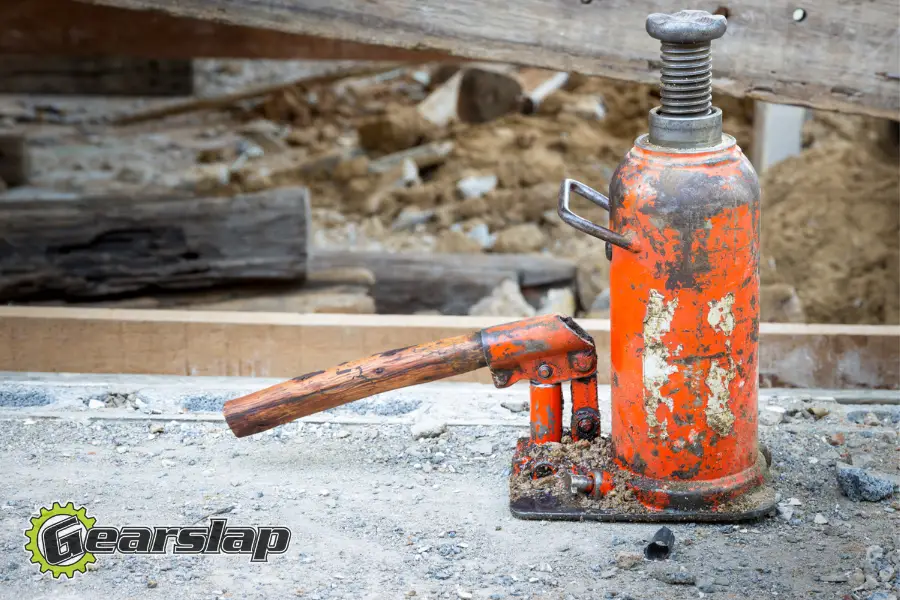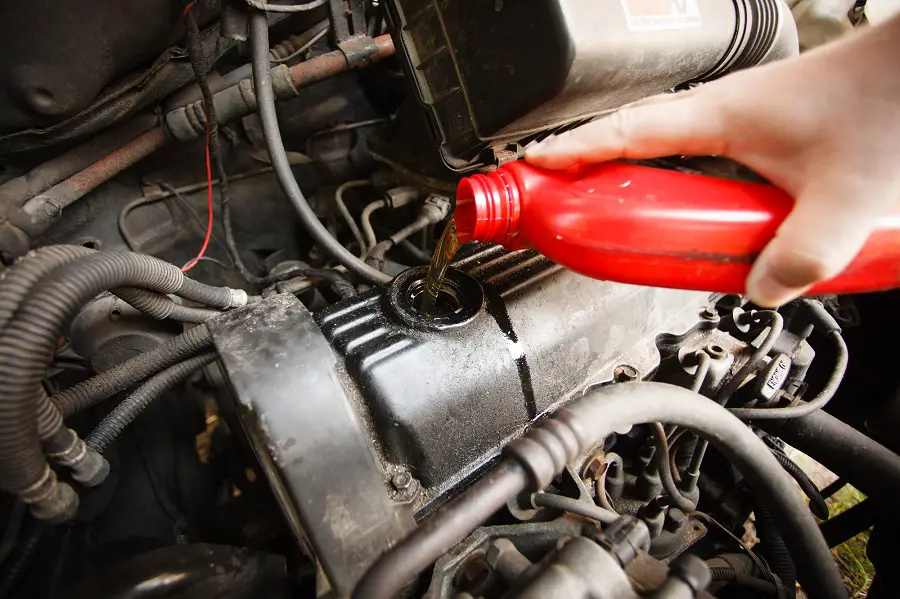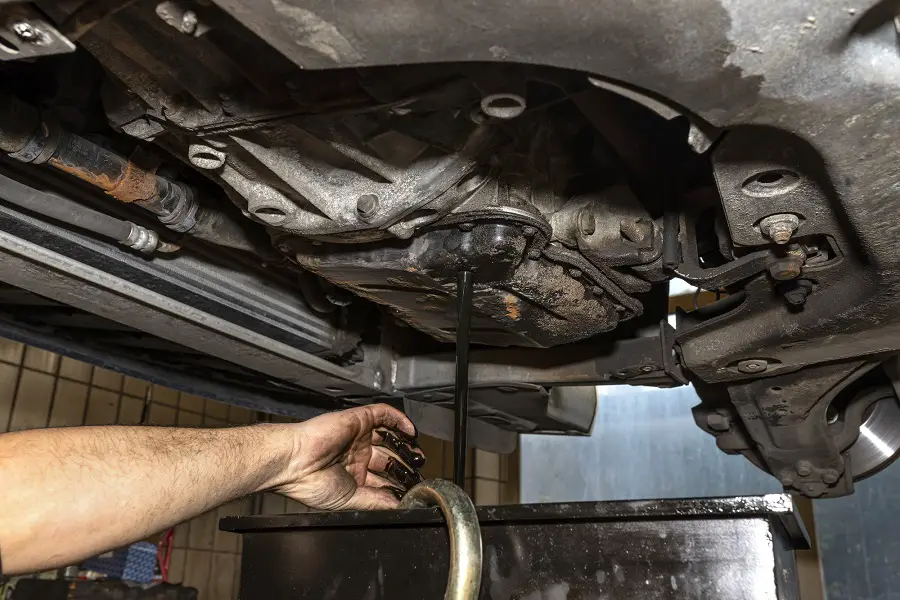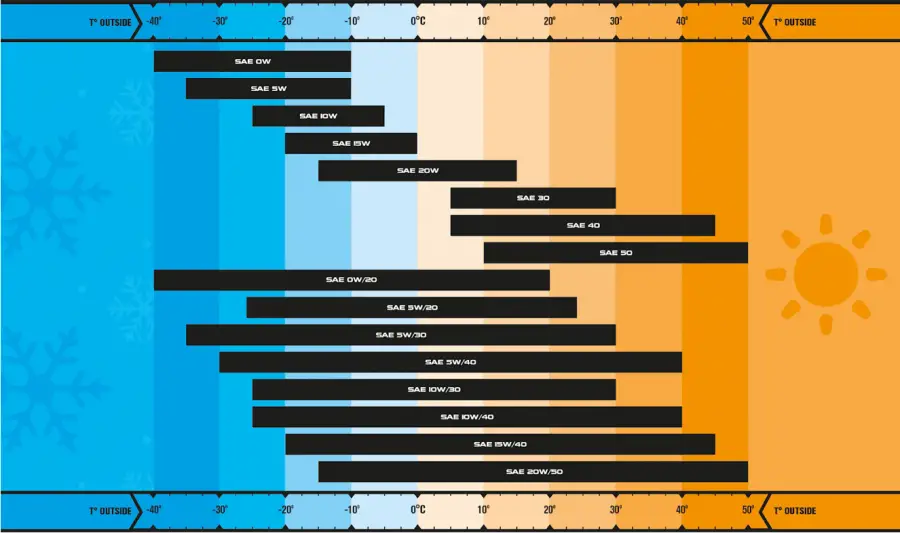Hydraulic floor jacks are fantastic pieces of engineering. They give everyone the power to lift vehicles off the ground for routine maintenance and emergency roadside repairs.
Yet sometimes they don’t work as they should. Read on if you want to learn how to troubleshoot a hydraulic floor jack.
In this post, I’ll cover everything there is to know about troubleshooting floor jack problems. You’ll be able to identify the common issues and with any luck, be able to repair the problems without having to purchase a new unit.
Troubleshooting Floor Jack Problems
Most hydraulic floor jacks are all built with a similar design. The user pumps a level that pushes fluid into a cylinder that raises the lifting pad on the jack.
I think this design is ingenious. It doesn’t matter if you’re a 300-pound bodybuilder or a petite person, jacks give everyone the ability to lift exceptionally heavy weights.
If you’re wondering why won’t my floor jack go up, there could be a few different causes. This is a common floor jack problem list, solutions for which are varied and could be relatively easy.
- Mechanical issues with the hydraulic jack.
- Not enough oil in the jack.
- Air bubbles in the fluid lines or cylinder.
- Fluid leaking out.
By looking into these three issues, you can quickly figure out why your floor jack isn’t working. I have successfully fixed multiple floor jacks in less than ten minutes, for less than ten dollars, by following these steps.

Visual Inspection
When troubleshooting floor jack issues, begin with a thorough visual inspection. Jacks have a variety of independent parts that work together to create lifting force. If all components are not in good condition, you should not use the jack.
The immense pressure and ability for jacks to lift heavy weights can be a recipe for disaster if they aren’t working well. No one wants to be under a jack when it fails.
Inspect your hydraulic floor jack by first looking for any missing pieces, loose bolts, or severe corrosion. If you notice that any bolts are missing or loose, you will need to replace those.
Some bolts might be a little loose to allow movement on a pivot, but they should not be falling off or allowing excessive movement.
If you see signs of rust or corrosion, the metal parts of the jack could fail. Rust eats through metal. Critical parts that you can’t see might be about to fail if rusted.
As the pressure builds, you might force hydraulic fluid through a piece of rusted metal. If that happens, the jack could fail and lower rapidly.
Be careful with your visual inspection, particularly if you haven’t used the jack recently. If a visual inspection doesn’t show any problems, move on to the next step.
Check the Oil Level
The oil inside hydraulic jacks is another critical aspect. Troubleshooting floor jack problems include ensuring the jack has sufficient oil.
Almost all hydraulic floor jacks have a place to add oil. Sometimes it is a small rubber piece that acts as a stopper, while others have a removable bolt to access the oil fill.
One of my jacks used the release valve as the oil fill location. Unscrew it slightly to lower the jack or extract the whole bolt to fill up the oil. (check out our article on how to fill a jack with oil if you need to know how to do it)
I initially thought there was a problem when fluid came out of the hole as I lowered the jack. Then I realized I had mistakenly unscrewed it too far. Thankfully, I had some jack oil on hand and could replace it immediately.
Check your jack and identify where the fluid fill location is. Jacks will not function properly because of insufficient oil. Once you locate the oil fill, see if you can find markings showing when it is full. If none are present, it likely should be full to the top.
Fill your jack with the appropriate hydraulic jack oil until it is full, then cycle the jack by extending it fully and collapsing it again to ensure the oil reaches everywhere it needs to. Recheck the oil level to verify it has an adequate level.

Why Won’t My Floor Jack Go Down?
Another reason why the jack won’t go down could be air bubbles trapped inside the jack.
If air gets stuck inside the hydraulic lines, the fluid can’t provide the pressure it needs to lift. Release these air bubbles to restore your jack to working order.
This step of troubleshooting floor jack problems starts by finding where the pressure release valve and the oil fill location are on your jack.
Many floor jacks release pressure by twisting the handle in a counter-clockwise fashion. Others use a small bolt or level to lower. This solution can help answer why won’t it go down.
If that fails to fix it, check the oil level. If it seems adequate, cycle the jack by fully extending and then collapsing it without a load. Repeat the process two to three times to ensure any air bubbles are purged, adding oil if necessary between each cycle.
If your floor jack has a drain plug, unscrew the plug and allow the oil to drain out. Replace the drain plug, then fill up the jack from the fill hole, cycling the jack a few times to ensure all air bubbles are released.
How to Find Floor Jack Leaking Fluid
It is obvious when floor jacks are leaking fluid. These tools aren’t designed to leak fluid in regular use. If you notice that some oil comes out when using the jack, you should start troubleshooting floor jack procedures.
Try to locate the source of the fluid. It might be from the oil fill hole or pressure release valve. If that is the case, tighten the cap, and hopefully, the fluid will stop leaking.
If the fluid is coming from another part, like a seal on the main cylinder or a hydraulic line, then you might have a more severe problem on your hands.
In rare cases, these might be able to be fixed. But most of the time, you’re likely better off replacing the jack rather than rebuilding the cylinder or hydraulic fluid line.







